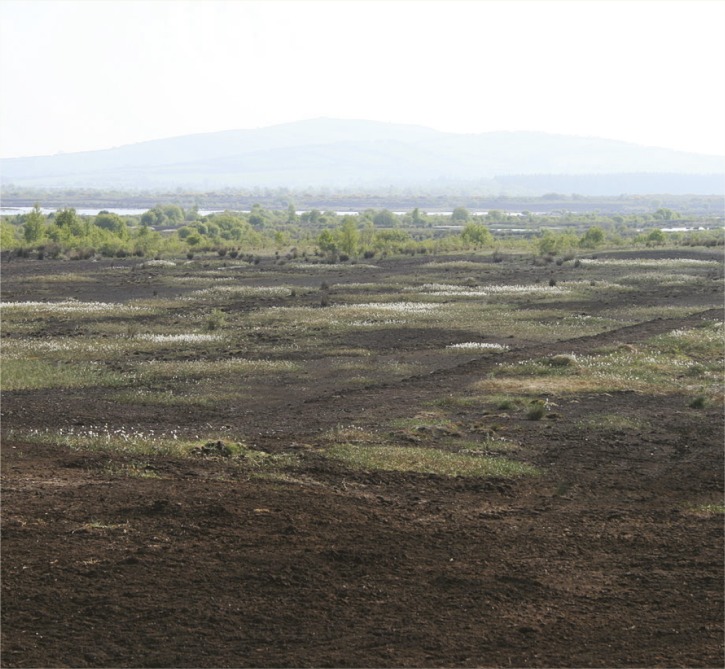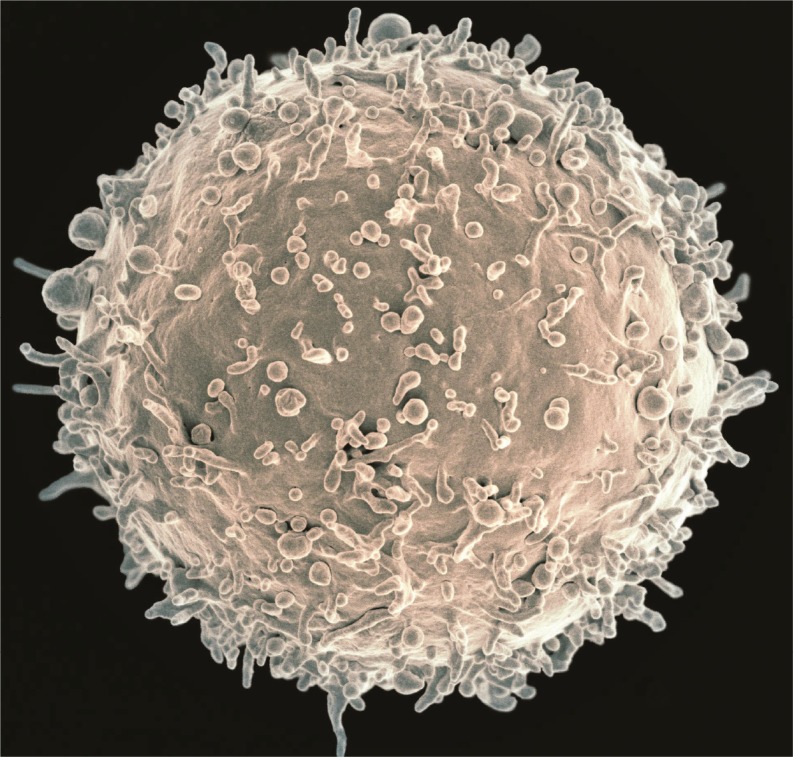Carbon emissions from preindustrial human activity

The Bog of Allen, a peat bog in Ireland. Image courtesy of Wikimedia Commons/Sarah777.
Preindustrial human impacts on Earth’s climate remain uncertain. Reconstructions of the total terrestrial carbon balance suggest only small carbon losses from the land over most of the past 5,000 years. However, a sufficiently large terrestrial carbon sink, such as peatland growth since the last glaciation, could have masked equally large anthropogenic carbon emissions during this period. Benjamin Stocker et al. (pp. 1492–1497) estimated the global peatland carbon balance during the past 11,000 years from observations and modeling, and simulated CO2 emissions due to human land use based on published scenarios of anthropogenic land-use change. The analysis suggested the presence of a large nonpeatland terrestrial carbon source between 5,000 and 3,000 years ago, one that could not be accounted for by anthropogenic sources. The CO2 increase that began 7,000 years ago and the growth of terrestrial carbon storage after the year 1500, previously cited as evidence of human impacts, could not be explained solely by land-use changes. A combination of bottom-up estimates and top-down constraints suggests that after 1750, land-use–related CO2 emissions rose to unprecedented levels, dominating natural changes, according to the authors. — B.D.
Genome editing ameliorates genetic skin disorder in mice
Recessive dystrophic epidermolysis bullosa (RDEB) is a rare skin disorder caused by mutations in the Col7a1 gene that lead to loss of functional collagen VII protein and separation of the skin’s dermis from the epidermis. Recalcitrant blisters on the hands and feet, disrupted mucous membranes in the digestive tract, and enhanced risk of squamous cell carcinoma together mark the disease. Using CRISPR-Cas9 to introduce a disease-associated point mutation in an exon of Col7a1, Wenbo Wu et al. (pp. 1660–1665) created a mouse model of RDEB that recapitulates its clinical manifestations. Deleting the mutant exon resulted in a collagen VII protein with a truncated domain, restored the protein’s normal function, and reversed the skin blistering observed in mutant mice. Cas9/single-guide (sg) RNA ribonucleoproteins injected into the tail skin of newborn mutant mice, followed by electroporation, led to successful deletion of exon 80 of Col7a1, enrichment of collagen VII in the skin’s basement membrane zone, and a doubling of the average dermis–epidermis adhesion area 3–5 days after treatment, compared with untreated mutant mice. Current clinical trials of gene and cell therapies for RDEB require repeated treatment and deploy viral delivery systems that pose potential risks of off-target genome editing, adverse immune reactions, and cancer. Further studies might help determine whether Cas9/sg RNA ribonucleoprotein-based gene correction represents a potential curative strategy, according to the authors. — P.N.
Microbiota-initiated antibody formation in mice

Colorized scanning electron micrograph of a B cell from a human donor. Image courtesy of the National Institute of Allergy and Infectious Diseases.
During an antibody response, immunoglobulin (Ig) in antigen-naïve mature B cells can undergo class-switch recombination (CSR), a switch from one form of Ig to another. CSR enables diversification of antibody functions. CSR to IgD is rare and regulated differently, compared with other Ig CSR events. Jin Huk Choi et al. (pp. E1196–E1204) investigated the regulation of IgD CSR in mice. The authors found that deficiency of the DNA damage-response protein 53BP1 caused age-dependent overproduction of IgD in mice with a Trp53bp1 gene mutation. The IgD overproduction in Trp53bp1−/− mice resulted from increased IgD CSR exclusively within B cells from lymphoid tissues associated with mucous membranes. Gnotobiotic techniques revealed that signals from gut microbiota drove IgD CSR in Trp53bp1−/− mice. Furthermore, the authors detected microbiota-initiated IgD CSR in lymphoid tissue B cells from the nasal immune system in wild-type mice. By inhibiting alternative nonhomologous end-joining in Trp53bp1−/− mice, the authors found that DNA double-strand breaks in 53BP1-deficient B cells are likely repaired through alternative nonhomologous end-joining as well as homologous recombination pathways, allowing IgD CSR to occur. According to the authors, the results indicate a pathway in wild-type mice that is hyperactivated in Trp53bp1−/− mice, whereby Toll-like receptor signaling in response to microbiota elicits IgD CSR. — L.C.


